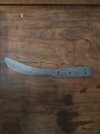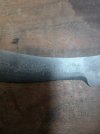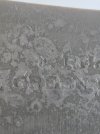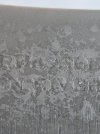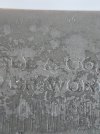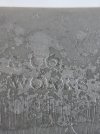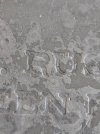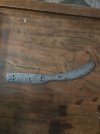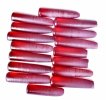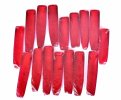vsndesigns
Gold Member
- Joined
- Apr 14, 2023
- Messages
- 58
I think I bought myself a kitchen J. Russell & Co. butter knife for twenty bucks at a swap meet last weekend. Kinda sharp for a butter knife though… it came without a handle or box, just the blade wrapped in blue painter’s tape for whatever reason. It’s got five holes in the tang, and I soaked it overnight in Navy rust remover jelly. Now I’m thinking about starting with 400 grit up to 2000 grit to polish it out to a nice mirror finish. Here’s the kicker: I’m seriously considering adding real ruby scales to it, if I can find a local lapidary class to prep the slabs without shattering them. Thoughts? Has anyone here ever tried using corundum slabs for scales before, or am I about to break something expensive and cry in my shop?